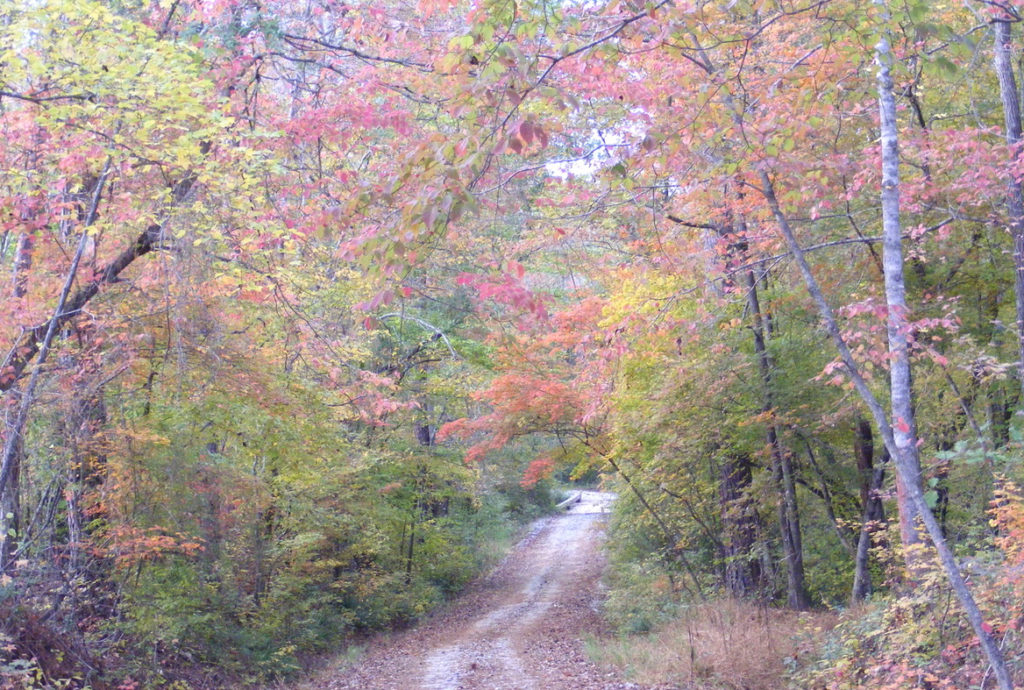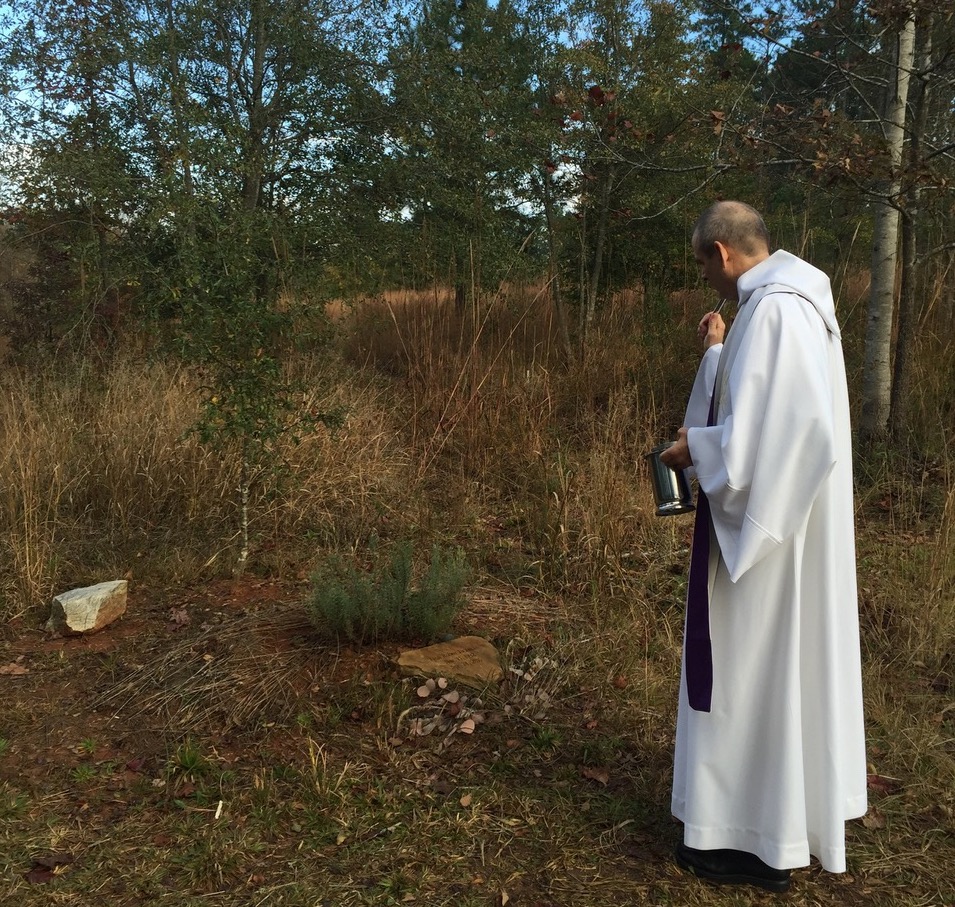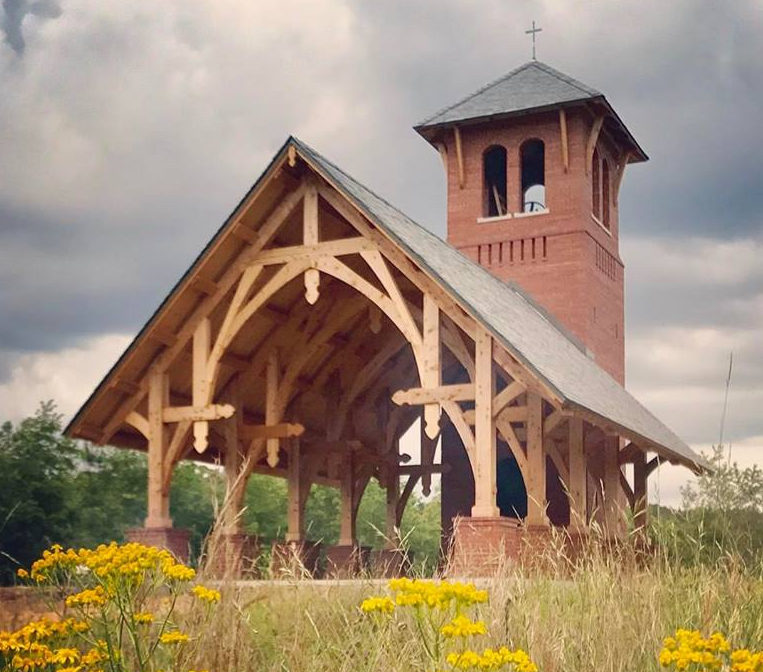In an earlier post, we began to share the story of Joe Whittaker. He played a pivotal role in the founding of the Honey Creek Woodlands green cemetery on the grounds of the Monastery of the Holy Spirit in Conyers, Georgia.
Two elements of Joe’s story compel me to share it. First, for Creation to be healed and renewed in any significant way, we need to integrate a commitment to God’s earth into our culture. The burial of our loved ones offers a great opportunity to do just that. It is a defining moment in the lives of families and religious communities. Burial intimately connects us with Creation. It also brings us back to the humility and radical Creation kinship of dust to dust.
Second, when God calls you to make a difference for the future of God’s earth, you will need to step outside of your comfort zone. You and I can learn about the challenges and rewards of answering that calling from Joe.
Getting Honey Creek Woodlands Going
When talking about the effort and challenges to get Honey Creek Woodland going, Joe says, “It’s good I didn’t know then what I know now. I probably would have just said, “Good luck with your project!””
Joe’s lack of training in land management and lack of knowledge of Piedmont ecology posed big challenges. He was going to try to create a green burial cemetery on 80 acres of formerly forested land that had been clear-cut some years back and was in a state of transition.
As Joe puts it, “I had no idea of what the land was going to do. I was just overwhelmed with what it did.”
In particular, invasive species had already taken hold in the forests. The clear-cutting gave the invasive species a wonderful opportunity to spread. In addition, the natural succession of the Piedmont woods also generated tremendous vegetative regrowth. This meant a jungle of green overwhelmed the land. Blackberry and briars, in particular, grew vigorously.
Walter Bland, a local native plant expert, visited the site with Joe early on and said, “Joe, I don’t know what you’re thinking is, but your clientele is going to want to see natural.”
“That’s what we’ve got,” said Joe.
“No, no, no,” said Walter. “There’s a big difference between natural and nature. Natural has a lot of management involved. It looks like nature but it’s under control.”
In short, people were not going to want to bury their loved ones in thickets. Nor would they find it practical or appealing to come back to visit a thicket.
Joe, with the benefit of the wisdom of Walter and the Georgia Piedmont Land Trust, made a significant decision. Rather than trying to control all 80 acres in an aesthetically pleasing way through an intensive use of resources, he would allow much of the 80 acres to go through a decades-long natural succession process. Over time, trees would naturally emerge in these areas. Their shade would, over time, thin out the understory plants.
But in the smaller areas where burials would be done in the short-term, Joe and his staff actively managed the landscape. This meant trimming trees and controlling brush. These areas would still be natural and have abundant native plants that are vital for wildlife. They would, however, be more visually appealing and accessible for visitors. Honey Creek Woodlands would, in other words, be going for something that looked natural and functioned ecologically. It just wouldn’t be 100% unmanaged naturalness.
Joe then worked to figure out the logistics and layout of the cemetery. The area where the burials were to take place was actually a mile and a half from the monastery itself. And between the monastery and the burial area there was Honey Creek, crossed by an old, dilapidated bridge. The only existing way to travel in that direction was a rough Forest Service road. Joe gave the solving of these issues a high priority.

The road through Honey Creek Woodlands and a forest rebounding from clear-cutting. (Courtesy of Honey Creek Woodlands)
“One of the things that I’ve really focused on for the last ten years,” says Joe, “is trying to make this as convenient and logistically smooth for families as I possibly could.”
“People get caught up in the warm fuzzy part of the funeral service. But you’ve got to have parking. You’ve got to have accessibility for elderly people. I keep beating that drum. You’ve got to think logistics, people. Before any natural burial cemetery gets off the ground, think about logistics!”
This focus on the details has come out of the awareness that the modern, conventional funeral does make things convenient. There is parking. There are bathrooms. For natural burials to work for most people, it can’t be too challenging or inaccessible.
“If we can grow the number of people that this options works for just by providing a little bit of convenience,” says Joe, “then it will be well worth it. If your facility does not work for the elderly, it’s probably not going to be very successful.”
One of the ways they provide convenience is by having a fleet of golf carts visitors can use. While some visitors use the hiking trails, the vast majority of the people who come to visit their loved ones are going to use golf carts to travel the three-mile round trip.
Having some golf cart repair experience, by the way, was another serendipitous part of Joe’s background that he brought to Honey Creek Woodland. Who would expect that working for a golf course during the summers of his high school years would pay dividends much later in life? Destiny? God’s plan?
Thanks to the efforts of Joe and his team, the Honey Creek Woodlands conservation burial cemetery opened on April 22, 2008 – Earth Day. Since then, more than 1,300 people have been buried there, including the remains of about 30 miscarriages. Honey Creek Woodlands has sold almost 3,500 plots.
The Demographics of Burial at Honey Creek Woodland
True to his background in market research, Joe has paid attention to the demographics of people who choose to be buried there. He’s categorized them into three groups.
The first are those desire to be buried on the grounds of the monastery where monks will pray for their soul every day. This appealed deeply to many people of the Catholic faith. Because there aren’t that many monasteries in Georgia, Honey Creek Woodlands possessed a unique attraction. These deeply Catholic families, however, rarely have had any exposure to green burial beforehand. Their faith doesn’t necessarily include a concern for Creation.
“That’s a big hurdle to overcome,” says Joe.
“If a grave isn’t manicured,” says Joe, “then some people feel their loved one is being disrespected. That’s been one of the biggest hurdles for me to get over – this cultural notion of manicured graves.”
Joe identifies the second group by their financial motivations.
“They’ll call up,” says Joe, “and say, “My uncle died without any life insurance but he left instructions that he definitely didn’t want to be cremated. And we don’t have any money.””
The lower cost of green burial is attractive to them. At Honey Creek Woodlands, the total cost is usually around $5,000 for everything. According to this article from 2017, the average cost of traditional funeral is around $11,000.
Joe found the budget-minded customers to be challenging to work with at times. The environmental and spiritual philosophy of a green burial did not motivate them.
People who specifically wanted a green burial comprises the third group.
“These are people who are environmentalists, whether they’re birdwatchers or people who camped a lot in their life or even hunters and fishermen – anybody who’s spent a lot of time in the outdoors. Even master gardeners,” says Joe. “It’s perfect for what they want.”
“When I’m trying to pitch green burial to people one of the things I’ll say,” says Joe, “is that our Creator had no need for a trash can.”
“Everything’s recycled.”
Part Three will be coming before long.






